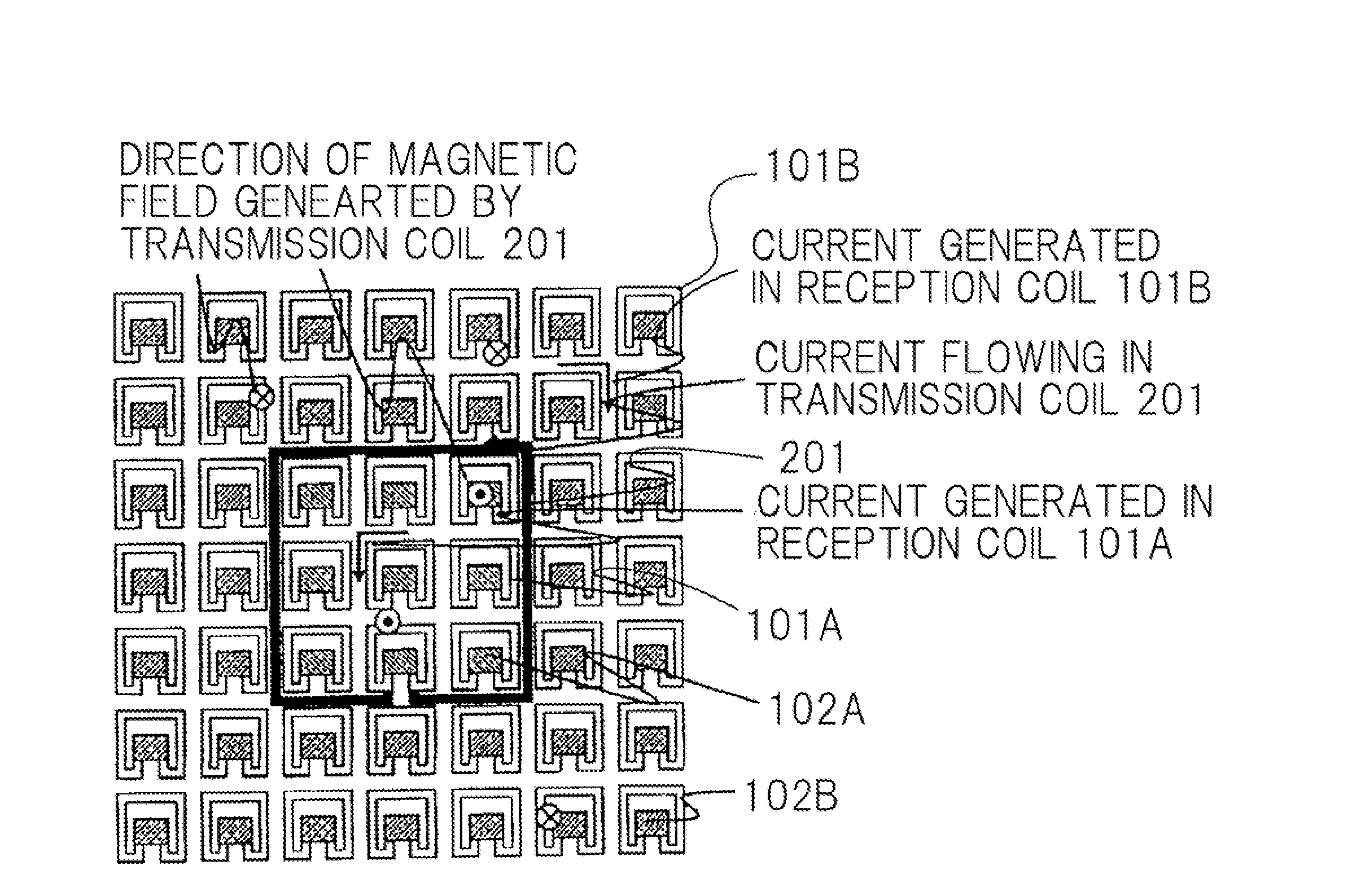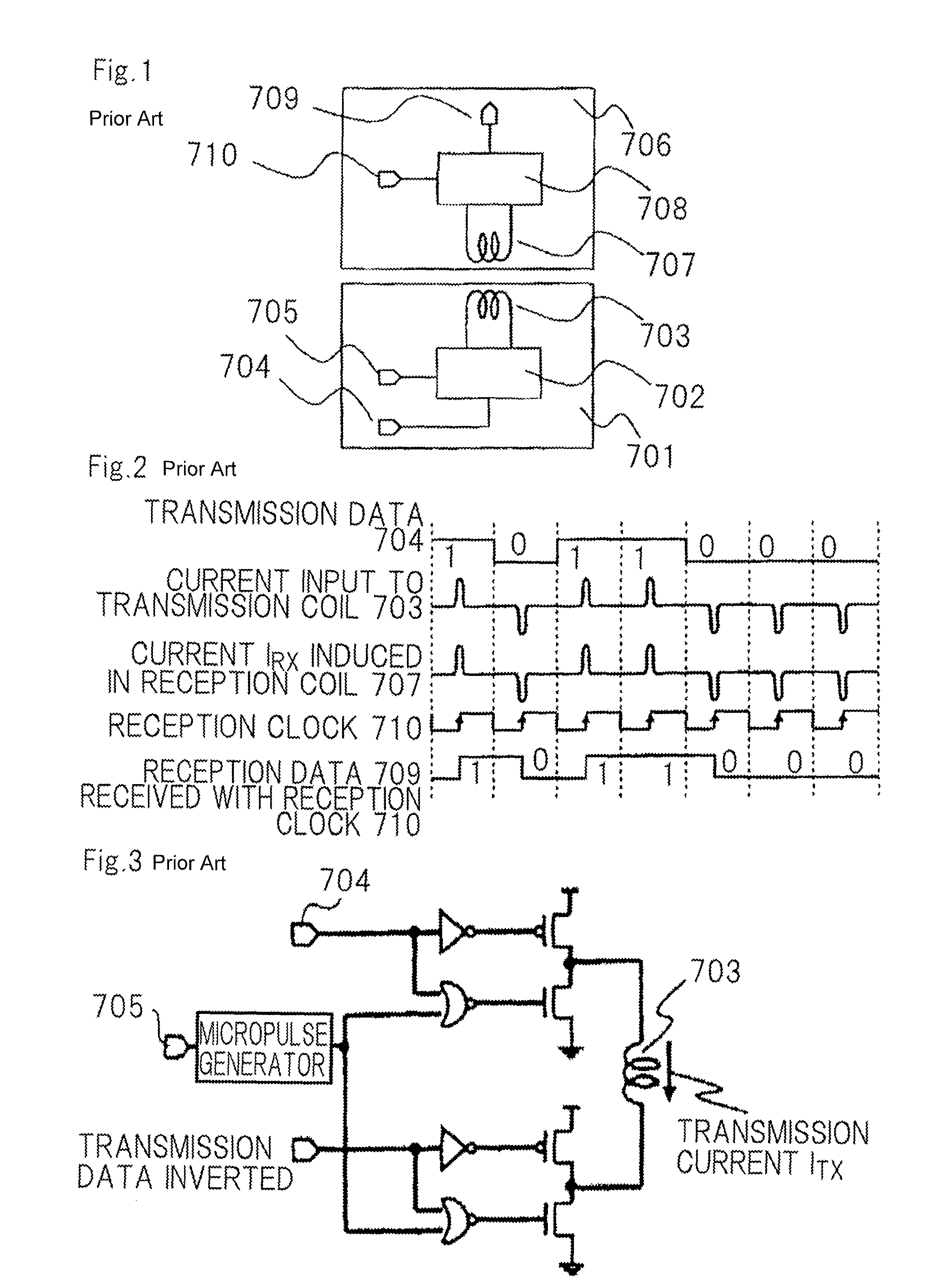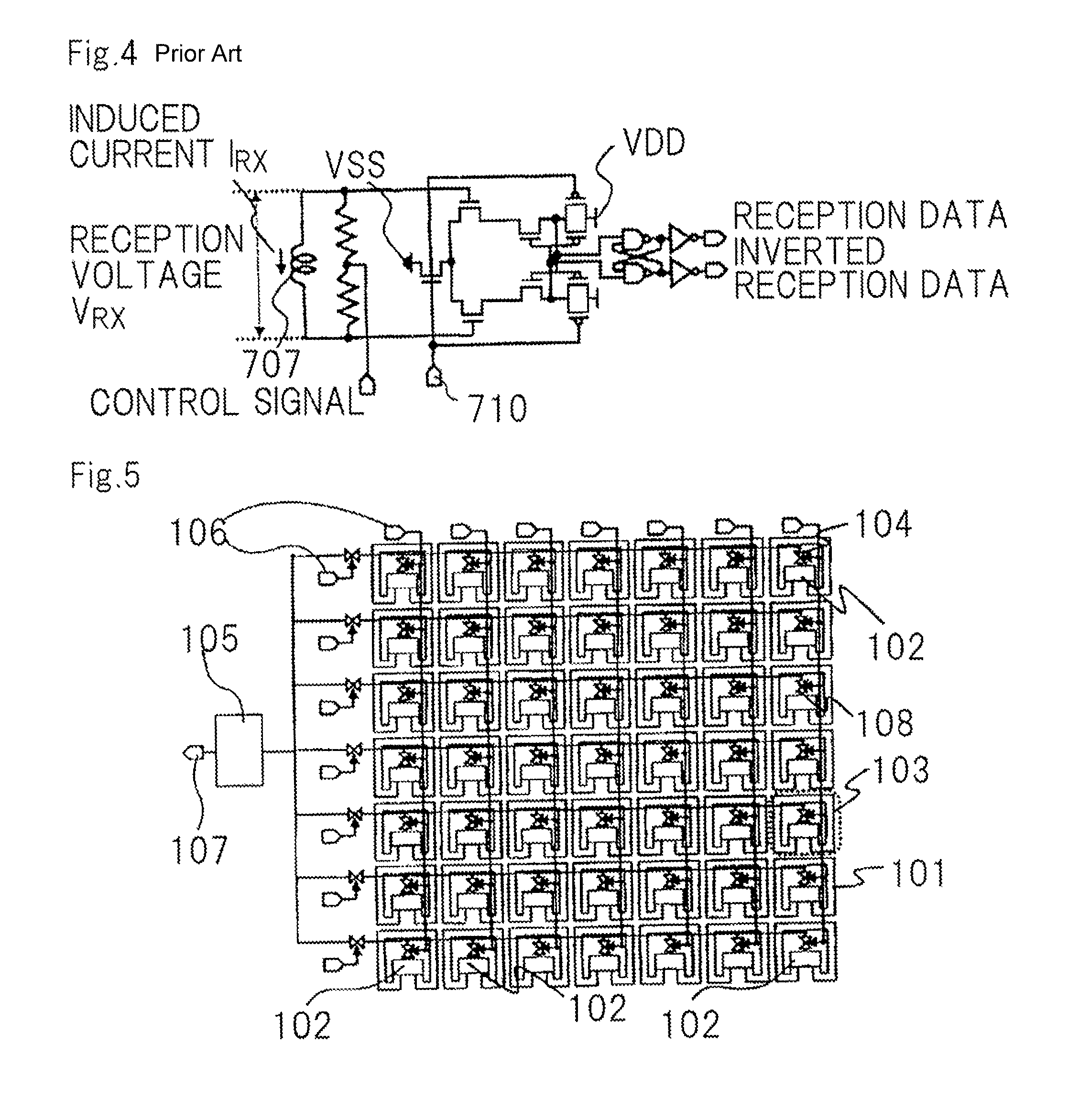Semiconductor device performing signal transmission by using inductor coupling
a technology of inductance coupling and semiconductor devices, applied in transmission systems, using reradiation, instruments, etc., can solve the problems of limited limit the efforts to microfabricate transistor devices, and limit the number of wires that can be used, so as to reduce the transmission power of semiconductor devices and achieve high-quality signal transmission. , the effect of increasing the transmission distan
- Summary
- Abstract
- Description
- Claims
- Application Information
AI Technical Summary
Benefits of technology
Problems solved by technology
Method used
Image
Examples
1st exemplary embodiment
[0105]FIG. 5 is a block diagram of a receiving section of a semiconductor device according to a first exemplary embodiment of the present invention, i.e., a semiconductor device having a transmission and reception coil pair comprising a single transmission coil and a plurality of reception coils.
[0106]The receiving section includes a plurality of reception mechanisms 103 in an array of seven rows×seven columns, each of reception mechanisms 103 comprising reception coil 101 and signal receiver 102. Signals received by reception mechanisms 103 are sent from readers 104 that are controlled by read control signals 106 to arithmetic device 105, which process the received signals into reception data 107. It is assumed that signal receiver 102 at the mth×nth location in FIG. 5 is referred to as R(m,n) and output signal 108 from R(m,n) is referred to as D(m,n) where m represents an mth row and n represents an nth column, each of m, n being an integer of 0 or greater than 0. In FIG. 1, each ...
PUM
 Login to View More
Login to View More Abstract
Description
Claims
Application Information
 Login to View More
Login to View More - R&D
- Intellectual Property
- Life Sciences
- Materials
- Tech Scout
- Unparalleled Data Quality
- Higher Quality Content
- 60% Fewer Hallucinations
Browse by: Latest US Patents, China's latest patents, Technical Efficacy Thesaurus, Application Domain, Technology Topic, Popular Technical Reports.
© 2025 PatSnap. All rights reserved.Legal|Privacy policy|Modern Slavery Act Transparency Statement|Sitemap|About US| Contact US: help@patsnap.com



